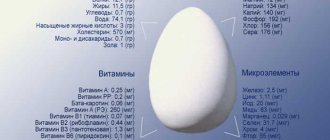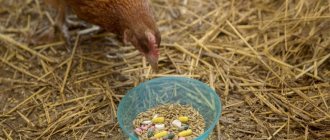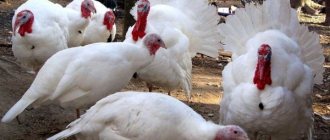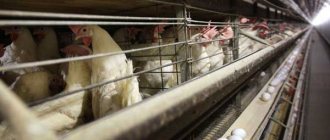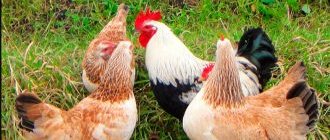Poultry farming » Chickens
0
2921
Article rating
Kira Stoletova
Broiler chickens are a specially bred breed that is used for meat production. The birds were created by crossing several species. This breed is designed to produce meat in the shortest possible time. The question immediately arises, do broiler chickens lay eggs?
Do broiler chickens lay eggs?
Like any other bird, broilers produce eggs, and they are the same as the product produced by regular layers. It is not worth using chickens of this type as laying hens, because they do not produce as many eggs as we would like.
Broilers, purpose of selection
Breeders working in the field of poultry farming stopped working with pure breeds back in the middle of the 20th century. The main focus of the work was the correction of lines - a group of birds, in the breeding of which the desired trait became the main one.
The line can be based on one or several breeds at once, resulting in a “simple” or “combined” line. The birds resulting from the work are called hybrids. According to the required indicators for an individual, they are much higher than their parents, which is ensured by the best qualities “collected” from different breeds.
Breeders try to combine not only breeds, but also lines, which sometimes gives an unexpected effect. Birds of three or four lines can be used in crossing; the individuals that result are called crosses (the numerical designation in the breed shows the number of lines used in the selection). The bulk of bred crosses are bred on the basis of four.
Broiler chickens are hybrids or crosses obtained by crossing lines and breeds. The goal of selection is to achieve maximum weight gain in the shortest possible time. The main breeds used in Russia are ROSS 308, COBB 500, Hubbard 15 F - there are quite a lot of them, the distinctive features of the breed can often only be distinguished by a specialist.
A feature of such chickens is the later achievement of sexual maturity - the age when chickens begin to lay eggs (birds grow only until puberty).
Features of crosses
To breed broilers, meat breeds (Cornish, roosters) and universal breeds (Plymouth rock, chickens) were used. The resulting individuals differ in physiological characteristics:
- later puberty (they start laying eggs later);
- rapid weight gain;
- very large eggs;
- two yolks;
- The most delicious meat comes from birds that have not reached the age of maturity.
The goal of broiler breeding is to obtain the maximum amount of meat. This is achieved by a properly structured diet for birds - appropriate feeding allows them to reach a weight of up to 2000 g already on the 45th day of life. Broilers can be slaughtered at two months of age; the weight of the chicken at this time can exceed 4 kilograms.
The recommendations of experts are clear - a broiler is not suitable for keeping for the purpose of obtaining eggs, although birds can lay eggs; for this, you can select a specialized breed.
Domestic specialists are working on breeding universal meat and egg crosses for breeding at home.
American researchers analyzed the beneficial elements contained in broiler eggs. The results showed that the differences relate only to the size and number of yolks; the content of microelements is identical to that of a regular chicken egg.
Obtaining eggs from broilers
If you decide to breed broilers for meat and eggs, you need to consider the following:
- due to the characteristics of the breed (late ripening), some chickens lay eggs at 9–10 months of life;
- eggs in most cases are unsuitable for hatching chicks; if they hatch, they tend to die immediately;
- chickens raised at home do not inherit the distinctive features of their parents, although they are larger than usual;
- if broilers begin to lay eggs, their number does not exceed 2-3 eggs per week;
- the meat of a chicken that has begun to lay eggs is dry and tasteless.
Using crosses to obtain eggs can cause their death due to the physiological characteristics of the breed:
- weight gain continues throughout the life cycle of the individual;
- the oviduct may be compressed by the mass of surrounding tissue and be too narrow for the egg;
- a stuck egg can cause the death of a chicken.
Therefore, to preserve the livestock, you should especially carefully monitor the behavior of the chickens when the broilers begin to lay eggs.
To do this you should:
- Carefully create a diet for chickens, including a large proportion of greens and ground chalk or shell rock.
- The amount of feed should be limited due to rapid weight gain.
- Monitor the feeding process - if the hen refuses food and water for three or four hours, it is possible that a particularly large egg is stuck in the oviduct.
- Gently massage the belly to help the bird - this will help the egg to come out.
If the problem occurs too often, the bird is discarded. She may die due to her tendency to have large eggs and obesity, which will lead not only to the loss of eggs, but also a large amount of meat.
Prospects for egg laying
In classic meat breeds, the prospects for egg laying are extremely limited.
It occurs only at 6-7 months. After two months of age, the chicken stops growing. It is irrational to keep a broiler for laying eggs, even if you are ready to spend, because they lay 2-3 eggs. in Week.
There are additional risks:
- blockage of the oviduct;
- spoilage of meat;
- low quality of the product due to the characteristics of the species.
In large animals, fat puts pressure on the canal, and blockage leads to problems. If the bird does not drink or eat for a long time, feel the belly. The withdrawal is facilitated by a light massage. If the egg does not come out, you need to call a veterinarian.
At the age of egg laying - puberty - the balance of the bird's hormones changes. Because of this, the meat becomes tough, less fatty, and therefore of poor quality. In addition to the small amount of product, broiler breeds will lay eggs with two yolks, which is good for cooking, but not good for breeding.
They cannot be used to breed new individuals at home. Such animals do not inherit the meat qualities of their parents and are susceptible to disease. Only first-born birds are suitable for breeding for slaughter.
Chicken keeping
To preserve the livestock and ensure the health of chickens, the necessary living conditions should be created for them. For the smallest chickens, especially comfortable “greenhouse” conditions are created with temperatures up to 30 degrees Celsius. The room must be isolated - a minimal draft can cause the death of babies.
A special requirement is lighting. For active growth of young animals, the light must be turned off every 3 hours, forcing the birds to rest. The day-night mode alternates every three hours.
In connection with. Due to the physiological characteristics of the breed, chickens forced into this mode eat better and absorb food more fully, and gain weight well.
Particular attention should be paid to ensuring the liquid needs of growing broilers:
- clean water must be in sufficient quantity;
- it is allowed to cancel feeding, but violation of the drinking regime can provoke the death of chickens;
- To improve digestion, you can replace clean water with decoctions of chamomile or rose hips.
Grown-up chickens are moved to long cages or ordinary poultry houses, where they must arrange bedding and remove the perches. To gain weight faster, birds need to be limited in their movement - the meat becomes less tasty, and the broilers' joints are easily injured.
Owners should worry about vaccinations for birds - for this they need to invite a veterinarian who will select the drug the chickens need.
Feeding growing birds
The growth and maintenance of the growing broiler population depends on the quality of the diet. Experts recommend buying ready-made, balanced industrial food. It contains the optimal amount of essential nutrients, microelements and vitamins.
The following types of feed are available for sale:
- initial - for chickens aged from 24 to 110 hours;
- starter - begins to be used for feeding chickens on the 5th day, used until the age of 30 days;
- regular – suitable for feeding broilers from 31 days of age.
Balanced feed intended for chickens during the first days of life contains all the substances necessary for rapid growth. Particular attention should be paid to the calcium content - young animals require a particularly large amount of this element due to the peculiarity of the structure of the joints.
Feed intended for birds from a week of age is enriched with biologically active substances. If there is no opportunity to buy food, and the diet is compiled independently, then it must include:
- dry yeast;
- a lot of green chopped grass;
- fat;
- meat and mineral component (bone meal);
- vitamin supplements;
- milk processing products.
At one month of age, broiler chickens reach a weight of 2 to 3 kilograms; many owners allow chickens to be slaughtered at this age. If a decision is made to keep chickens further, the diet is changed.
To feed birds use:
- crushed chalk;
- special feed yeast;
- chopped greens;
- fat;
- feed bone meal;
- mixture of grains - corn, barley and wheat;
- soybean pulp.
If the composition of the feed is maintained, the weight of the broilers rapidly increases. To maintain the taste properties of meat, birds are fed with chopped greens and grass in unlimited quantities.
A prerequisite for the survival of the livestock must be the presence of a large amount of calcium in the feed. It is optimal to give mineral supplements to the feed from time to time. The maintenance regime should include 8 feedings and a sleep break of 6–7 hours.
Broiler chicken diet
The given diet is balanced in terms of the content of nutrients necessary for successful growth.
- 0-5 days. Chickens are fed chopped boiled eggs and cottage cheese. For intensive growth, pre-start feed is given, starting from 20-25 g, or a wet crushed grain mixture. Feed 8 times a day, at equal intervals;
- 6-10 days. Little by little, feed yeast, grated carrots, crushed shells or eggshells, and vitamin D are added. If feeding with compound feed is planned, starting mixtures are introduced during this period;
- 11-20 days. The diet includes fish, bone meal, sunflower cake, boiled potatoes, curdled milk or skimmed milk. Feeding 6 times a day;
- 21-30 days. Starting from 150 g, corn is introduced, which colors the meat a pleasant yellowish tint. They also provide a wet feed mixture of feed wheat and boiled barley, boiled potatoes, peas, food waste, and dairy products. Meals 4 times a day;
- from day 30, chickens are transferred to an adult diet, which is maintained until slaughter. They provide whole grain, finishing compound feed. Vitamins, chalk, feed yeast, crushed shells, grass flour - a source of protein are required. Feed as much as possible, avoiding souring of the wet mash.
Is it possible to raise broilers yourself?
Breeding chickens of this type at home is impossible - the resulting eggs do not hatch due to the presence of two yolks, and the resulting chicks quickly die.
It is best to use chickens purchased from poultry farms at home. If you have an incubator, you can buy eggs and hatch chickens yourself.
General purpose broiler breeds that produce meat and can lay eggs include:
- Broilers-M, prone to rapid weight gain, a chicken of this breed will produce at least 150 eggs, provided that it starts laying eggs at five or six months. It does not pose any difficulties for breeding due to the absence of genetic defects.
- ROSS 308, broiler eggs of which can be used to produce chickens (they lose the quality of their parents), the distinctive quality is that the color of the carcass is too pale.
- COBB 500 is characterized by resistance to mortality, excellent weight gain, and the absence of typical broiler problems. The skin color of the carcass is pink, which consumers like. The required weight is gained within 45 days.
Keeping multipurpose broilers will allow you to have both meat and eggs. It is necessary to remember the basic rule - to regulate the nutrition of adult birds with a large amount of greens in the diet so that they do not rapidly gain weight and lay eggs better.
Egg-laying breeds
Every year, chicken meat is gaining popularity. Scientists are developing new meat breeds. Do broiler breeds lay eggs? The answer is yes. Best breeds:
- Ross-308. Good fast growing breed. With proper feeding and compliance with all maintenance rules, the bird gains 55 grams every 24 hours. Laying hens produce a record number of eggs among hybrids - 185 eggs per year.
- Ross-608. The peculiarity of the breed is that even after the bird reaches reproductive age, the meat does not lose its taste. You can get up to 140 pieces per year from 1 individual.
- Cobb-500. By four weeks, the individual reaches a weight of 2 kilograms. Average egg production - 160 pcs. in year. The maximum recorded productivity is 182 pcs.
- Broiler-M. The average weight of an individual is 2.6 kilograms. The reproductive system develops quickly. Birds begin to lay eggs at 5 months of age. The average egg production is 162 pcs. in year.
- Broiler-61. The breed is characterized by rapid growth with poor nutrition. An individual gains approximately 40 grams per day. By one and a half months - 1.8 kilograms. You can get up to 155 eggs per year from a broiler of this breed.
- Gibro-6. By one and a half months she weighs 1.5 kilograms. Productivity - 145 pcs. in year.
- Change. One of the most popular breeds. Bred by crossing Broiler-6 and Gibro-6. Birds of the Smenya breed have rapid growth, and their weight gain can reach up to 40 grams per day. Egg production is average - 140 eggs per year.




